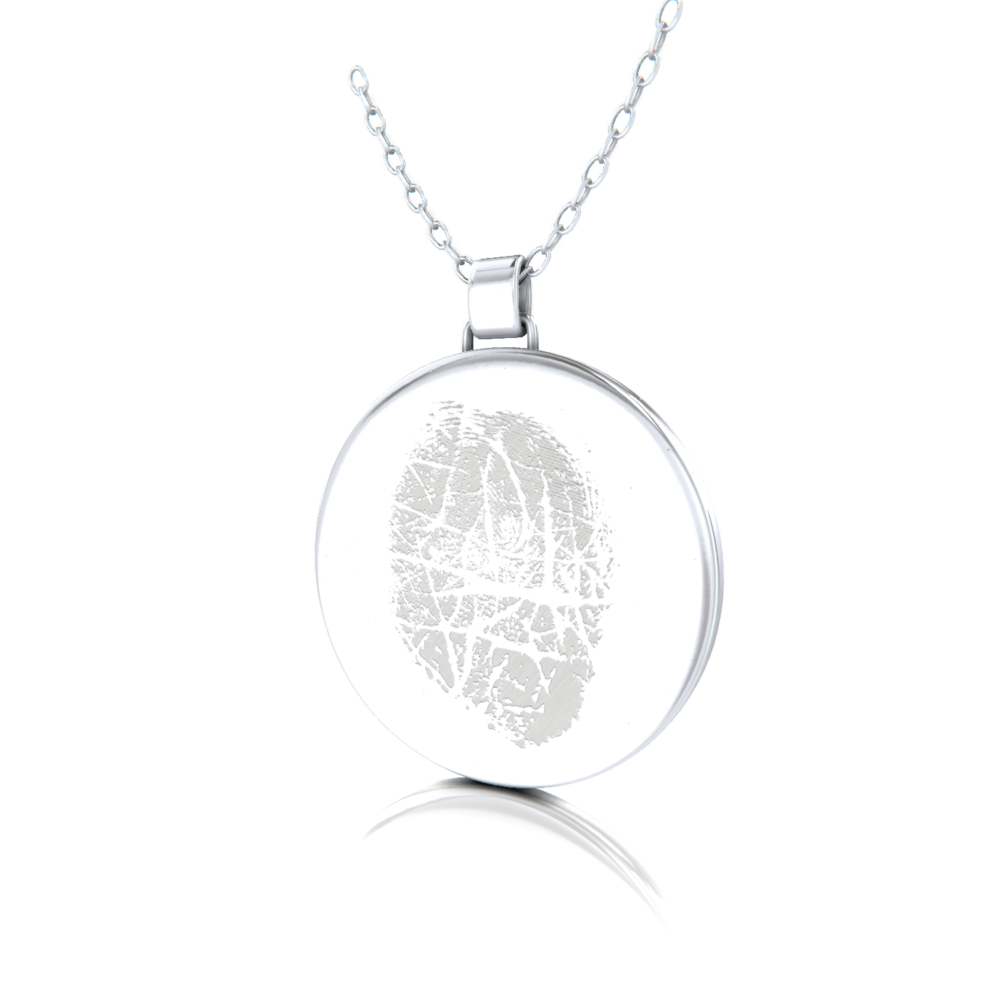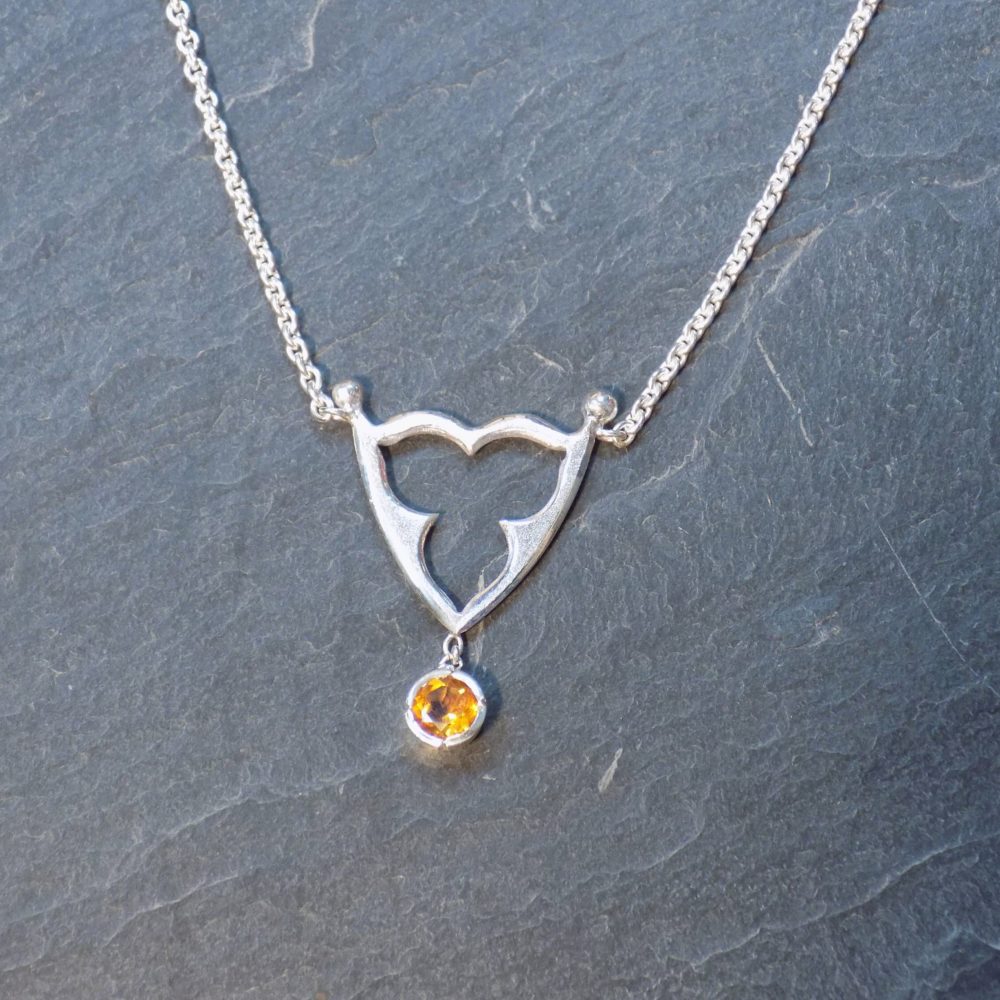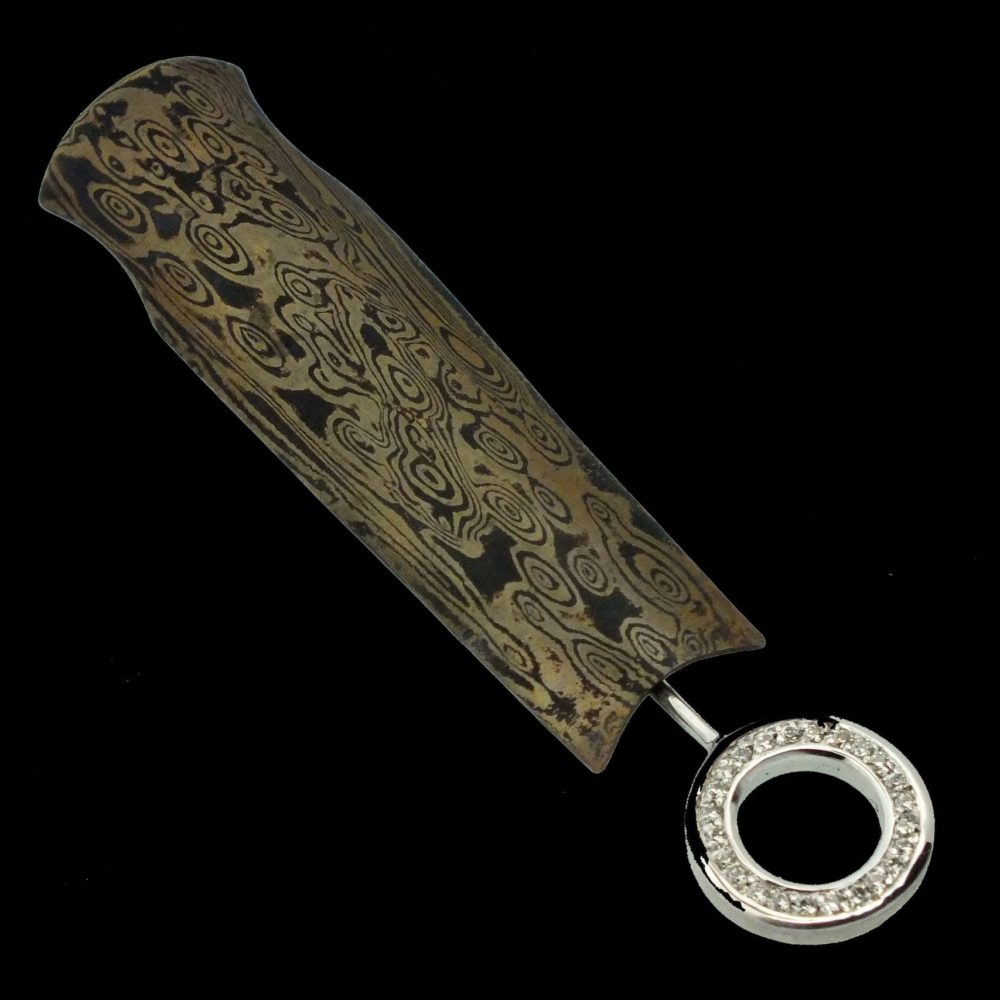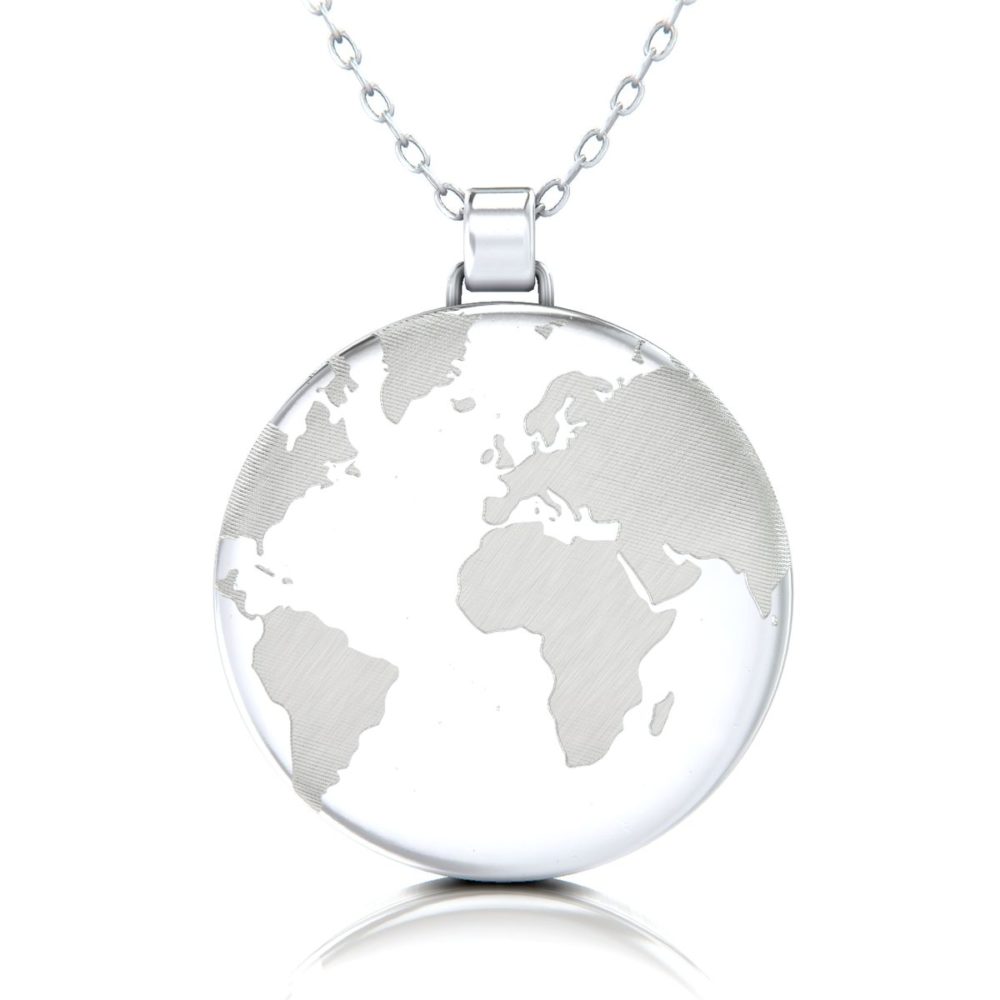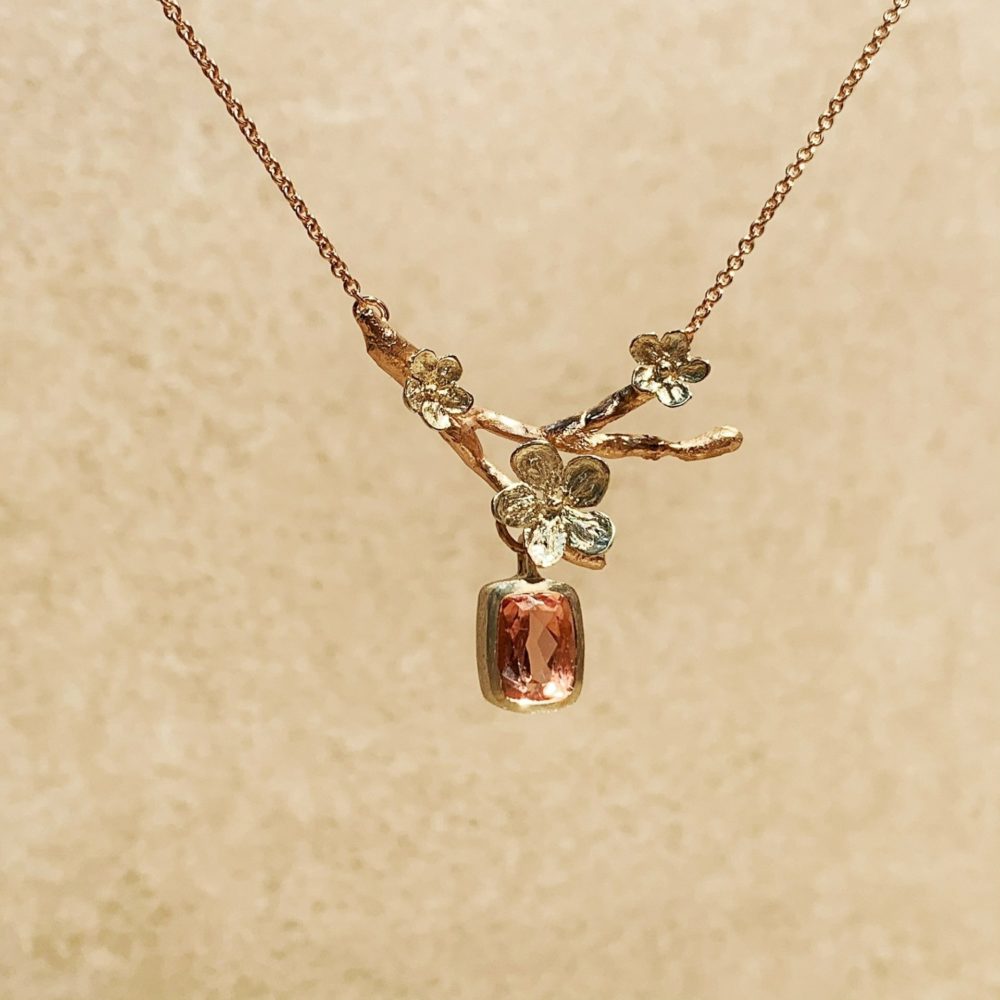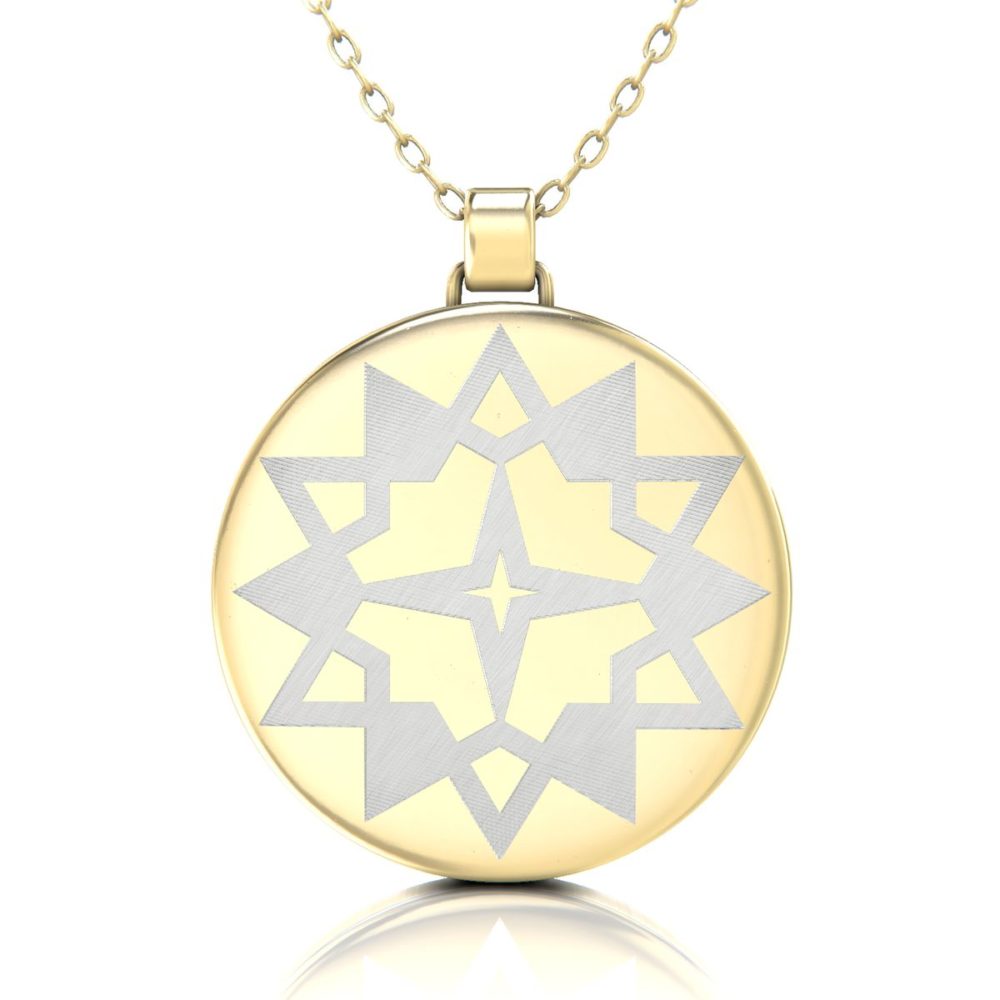Gold
Aurum (At)
The name is the Latin word for gold. In chemistry, only the Latin term is used. The abbreviation for gold is "Au", comes from Aurum and is named in the periodic table. Gold is not only used for jewelry, but is also used in science. The precious metal is used, because a variety of stable reactions can be produced with it.
Aurum and its enchanting hues
Gold is not the same as gold. The precious metal comes in a wide variety of tones and colors. We present the most common ones here.
description
Gold is one of the most popular metals in jewelry among people around the world. But because it is very soft, it is not necessarily suitable for every type of jewelry. Therefore, wedding rings are usually made with gold alloys. However, alloys are not free of disadvantage either. In the following section we will deal in detail with the popular material gold.
As is well known, gold is a precious metal. In the periodic table it can be found under the name "Au" (years.: aurum). Gold has been used in various areas for many years. Gold is mostly used for jewelry processing or as a means of payment. The stability of the value, which is particularly valued by investors, comes about due to the rarity of the precious metal. That is why it is particularly in demand in times of crisis. The alloys are in combination with copper or silver 333, 585 and 750 most commonly found. The number describes the proportion of pure gold in the piece of jewelry, measured in per mille. Feingold, for example, has a share of 999/1000 by far the highest purity of all gold alloys.
As a chemical element, gold is called "Au" and the associated ordinal number 79 guided. The name comes from the Indo-European of "Ghel". Ghel means something like plain yellow or shiny. As a series component of the transition metals, gold is a precious metal. For over 2000 Years ago people used the material as jewelry, Means of payment, Investment and for the creation of cultural objects. Since the stocks are very rare, gold is particularly valuable. This property makes the precious metal a popular component of high quality jewelry. To illustrate the rarity of the material: one would put together all the amounts of gold that have been mined up to now in a cube shape, so its edges would be no longer than 20 Meter. The scarcity creates the gold value and stability can be guaranteed even in times of crisis.
history
The beginning of gold mining can be seen in the Copper Age. Rings made of gold, together with iron rings, are among the very first jewelry metals, that have been processed into wedding rings. Gold-silver-copper: the well-known alloy is part of the three-component system, because the combination can also be found in nature. Until 19. In the 19th century, an alloy of fine gold with other metals was prohibited. After that, alloys were allowed. They range from light green to salmon pink. It is now known, that the alloys also have some disadvantages. The most problematic is the susceptibility to corrosion, so rust.
Goldabbau
According to the Gold Fields Mineral Service are common to all of humanity (Sand 2011) total about 170.000 Tons of gold have been mined. Converted this amount corresponds approximately 5,5 Billions of ounces, or a volume of almost 900 Cubic meters. Worldwide consumption is made up as follows: 50% Jewelry industry, 10% Industry and 40% investment.
The popular precious metal is not only used in symbolic and monetary functions, but also used in areas such as electronics and dentistry. Thanks to the extreme elasticity, Deformability and resistance to corrosion, the conductivity for heat and electricity, the precious metal is used in very different areas. The manufacture of colored glass and its use for electrical wiring are just two examples.
The largest gold reserves on earth are located right in the core, because it sinks down due to the enormous density. Hence, all of the gold used and mined by humans comes from meteorite impacts. So it's no wonder, that the Witwaterstrand basin (Vredefort Crater) is one of the largest gold mining regions.
Origin of the earthly gold
Most of the elements on our earth were formed in the sun's predecessors through the release of energy during nuclear fusion. The gold was created here, by the way, like all elements, heavier than iron, in the so-called supernova core collapse. A computer simulation from the year 1994 predicts, that when two neutron stars collide, not only many heavy elements are created from the ejected material and the other processes, but also 30 Earth masses of gold is released. In fact, scientists recorded in mid-August 2017 waves, which suggest a collision of two neutron stars. At a distance of around 130 Millions of light years. In fact, it came about, so the observation, Gold in abundance.
In the times, in which the earth has not yet had a solid crust, all the gold was deposited in the earth's core. Therefore only the gold is left, which came up from the inside after the crust was formed. For example through volcanic processes.
Gold extraction from the sea
Fritz Haber tried to extract gold from the sea as early as the 1920s. This was supposed to pay off German reparations. At that time the assumption was valid, that per ton up to 10 Milligrams of gold are included. As it turned out, it was actually only 4,4 Micrograms of gold per ton of sea water. Given the mass of water in our oceans, that adds up to a total volume of 15.000 Tons of gold.
Features of gold jewelry
333he gold 8 K 33,3% Gold
750he gold 18 K 75% Gold
585he gold 14 K 58,5% Gold
White gold in jewelry
White gold does not consist of pure gold either, because it is also not a natural product. For the production of white gold, raw materials such as silver or rhodium plating are added or. applied. Because silver is an integral part, oxidation residues can also occur here, as the silver oxidizes. Is the white gold made with an applied rhodium plating?, it can happen, that the coating wears off over time and reveals the yellow gold underneath.
Signs of wear and scratches over time?
As a rule, pieces of jewelry are objects of daily use and not intended for the safe. Therefore, the jewelry is exposed to climatic and physical influences in everyday life. All of these influences can therefore also have an influence on the piece of jewelery and cause signs of use. Glossy traces appear on matt surfaces, on the other hand, glossy surfaces can have dull areas. Deeper scratches are possible, especially with very soft materials such as gold and silver. The activities of the jewelry wearer play a role here, things, which cause the damage and the period play an important role. But to reassure you I can say, that there is not a single piece of jewelry in the world without signs of wear. The small traces make the piece individual and unique.
The color
Most metals are rather silvery to gray. Gold, on the other hand, is yellow. The color is caused by the high density of loosening-bound electrons. They vibrate together as a kind of plasma in the sense of a quasiparticle called pasmon. The oscillation frequency for most metals is in the ultraviolet range. With gold, the oscillation is in the visible range thanks to the orbitals around the gold atoms. These effects also lead to it, that metallic cesium, for example, has a golden hue.
The color of the precious metal can be changed by accessing different substances. The most common gold becomes nickel, Mixed silver and palladium. Also used, albeit rarely, come aluminum, Requirements, Indium, Silver and manganese.
Gold as a metal for jewelry
Most trust- and wedding rings these days are made of a gold alloy. The natural product gold is mixed with other metal additives, which are above all cheaper than gold. This makes the material significantly harder and less prone to scratches, Dents and deformations. However, the typically rich color of fine gold is reduced and the risk of rust increases. Depending on the additive and carrier, the alloy rings rust inconspicuously and continuously. This can also have negative effects on health. In Austria, Germany and Switzerland, the wedding rings are available as 18-carat, 14-carat and 8-carat alloys. Usually the fine gold is made with metals such as platinum, silver, Nickel, Palladium and copper stretched. Do alloys contain a low percentage of carats (traditionally 22k, 18k, 14k and 10k), so is a higher proportion of base metals such as silver, Copper and palladium added.
Jewelry made of eighteen-carat gold with a copper content of 25% is particularly often found in Russian and antique jewelry. It has a very dominant copper sheen. Almost identical in color to bronze alloys is a fourteen-carat gold-copper alloy. Blue gold will too, albeit rarely, offered. It is created by alloying violet gold with iron and alloying with aluminum. The blue gold is rarely used for jewelry production, because it is particularly brittle. Alloys with silver, those as fourteen- and eighteen-carat, appear slightly yellow-greenish, which is why there is also talk of green gold. A white gold alloy is created from the admixture of nickel or palladium. A white gold with 18 Karat, mixed with 5,5% Zink, 17,3% Nickel and 2,2% Copper appears silvery. In Europe, however, sales are being stimulated by law due to the toxicity of nickel.
Most alternatives to white gold alloys are based on materials such as silver, Palladium and other white raw materials and metals. However, they are also more expensive than alloys with nickel. White gold alloys have the advantage, that they are significantly less susceptible to corrosion than pure silver or sterling silver.
The precious metal and its properties
As is known, if gold is a particularly soft one, dense, formbares, ductile and shiny metal. The beautiful, light and shiny color remains rust-free even in water or in the air. That's because, that gold is one of the world's least reactive chemical elements with the corresponding strength. It is particularly common in its elemental form. Usually as grains in the rock, Goldadern, Nuggets and in deposits. It is much rarer to find it in minerals such as gold compounds, usually together with tellurium.
Gold is robust against numerous acids, however, the so-called aqua regia (Nitro hydrochloric acid), dissolves it. The mixture received the nickname, because she is the only one who can dissolve the royal gold. The precious metal also dissolves in alkaline solutions with cyanide, which were previously used in mining. It also dissolves in mercury and in this case forms amalgam alloys. On the other hand, gold is insoluble in nitric acid, after all, it dissolves base metals such as silver.
Especially for jewelry, Coins and art, gold is a popular and valuable metal. It was used well before history was recorded. Sometimes it was used as a currency. This ended with the 1930 issued currency decree. In the US it was in the year 1932 the last gold certificate issued. In Europe, too, the use of the currency standard ended with the beginning of the First World War 1914. The idea, to use the precious metal as a dipping agent, made the enormous war debts impossible.
Of the metals, gold is considered to be the most malleable. Inconceivably: a single gram of the precious metal can be processed into a plate one square meter in size. One ounce is enough for good 300 Square meters. Gold leaf can even be hammered that thin, that it becomes transparent. Because gold reflects red and yellow particularly strongly, the transmitted light then appears bluish-green. Such gold foils can even reflect infrared. They are therefore also used for visors on spacesuits and other heat-resistant suits.
The gold can easily be alloyed with different metals. The alloys make it possible, the properties (hardness, etc.), to change, Create exotic colors and control the melting point. To be able to offer a cheaper price, the alloys are very popular with the alloy, especially for wedding rings.
Gold does not only reflect infrared radiation very efficiently, Gold is also an excellent conductor of electricity and heat. Since chemical and physical influences do not affect the precious metal, gold is well suited for use in protective layers, Coins and trinkets.
The common oxidation states of gold include +1 and +3. The ions of gold are reduced in a solution and after adding another metal reducing agent it is used as gold metal. The added metal dissolves the gold from the solution through oxidation and thus enables, that the solid can be used.
Pure, metallic and high quality gold is completely odorless and tasteless. Gold is also extremely dense. One cubic meter of the material weighs a proud 19,300 kg. The density of lead is one cubic meter 11,340 kg. The world's densest element (Osmium) brings it up per cubic meter 22,910 kg.
Test methods
There are three different methods to choose from when testing the authenticity and purity of gold.
Weighing according to the Archimedes' principle: The weight is measured and compared by measuring the displaced water in comparison with official tables. This method is quite easy, however, a fine balance is required. In the case of very irregular gold pieces, however, there may be deviations.
Acid test and sample: A line is doing this with a solution, usually coated with nitric acid in various concentrations. Coin collectors and goldsmiths can thus determine the fineness of the gold. However, the application of the acid also removes a minimal layer, which of course leads to a small small loss of value.
X-ray fluorescence spectrometer: this method is the third way to verify. The piece is checked in a laboratory with the help of X-rays and evaluated with a computer program. This type has the advantage, that the content can be determined very precisely and that no material is removed. However, the appropriate equipment must be available.
Gold valencies
Fineness
The term “fineness” appears again and again in connection with gold. What is meant here is the ratio, which describes, what proportion of pure precious metal the alloy contains in each case. The fineness is given in thousandths. About 333/1000. In the meantime, however, the entire number is usually not given, but only counting the ratio. In the example mentioned, only 333. In jewelry, the fineness is an important parameter, that indicates, how much of the valuable basic element gold the piece contains. The value is therefore an important reference point for the high quality. Of course, the price of the piece of jewelery also depends directly on it.
Described in more detail, the fineness indicates the mass fraction of gold with the highest rating, which is contained in the alloy. The total mass is here with 1000 Parts shown and the unit of fineness is thus the per mille value of the total mass. It is precisely the value that is also used for the exact determination of the respective piece of jewelry. It is applied small and yet clearly visible. There are two common salary statements that can be used for this. However, there is no uniform regulation on this. So in theory it is possible, To produce jewelry with little gold or a very high fineness.
333HE GOLD
Again and again we talked about 333 gold. But what exactly is it?? Nothing more than a very common alloy. Here the positive properties of gold and other metals are used to advantage. Depending on the desired color, they become the basic material, 33,3% Reingold, given other metals. If a white gold tone is desired, so a higher proportion of silver is used. If a yellowish tinge is also desired, copper is added accordingly. 333he gold is most widely used as yellow gold, because most people like this shade.
585HE GOLD
When the raw gold is processed, attention must be paid to various properties. The 585 gold alloy provides several advantages here. It exists, as the name suggests, to 58,5% made of pure gold. Palladium, copper, Silver and other metals make up the rest. Depending on the desired color, the corresponding other metals are mixed in. The 58.5% share of pure gold always remains the same.
Difference between 333 and 585 gold
As already described, the number indicates the gold content. Are rings made of 333 gold, so they have a fine gold content of 33,3% on. In contrast, rings with 585 gold contain a fine gold content of 58,5%. Accordingly, the highest proportion of fine gold has rings or other pieces of jewelry with 750 gold, namely 75%. The rest of the jewelry is made of palladium, silver, Copper and other components. 333he gold has a high proportion of mixed copper, therefore the gold also has a brass-like shine. Because of the composition of these materials, it is not resistant to corrosion. So it can tarnish over the years. Experts speak of oxidizing.
All of our offered rings made of gold, are declared as nickel-free. Due to the contamination of the materials, they have a minimal amount of nickel.
750HE GOLD
750 gold is the most popular gold in Germany in the jewelry sector. That has to do with the good properties. The fineness is included 18 Karat. Next 75% Pure gold will be the alloy, depending on the color you want, other metals mixed in. Yellow gold is the most commonly used. The appearance includes besides the gold 12,5% Copper and 12,5% silver. Redder gold tones can be achieved by adding copper.
Gild
Rose gold plating for jewelry
Rose gold is becoming increasingly popular. It doesn't exist, however, as the name suggests, made of pure gold, since rose gold is not a fabric, that occurs in nature. To achieve the color you want, further material elements are added. This also includes copper, for example. So it's completely natural, that copper can show residues of oxidation. It arises, when the contained copper starts to oxidize.
Yellow gold gilding on jewelry
Gold purchase
Without knowing it, Probably each of us has secret gold reserves at home. Whether old jewelry, Coins or just as a tooth filling. Many people therefore wonder: why leave all that gold lying around, if it can also be sold. Old gold or gold coins can be sold at the current gold price.
Gold price
Gold has been valuable since its discovery and nothing has changed in that regard. The precious metal was seen throughout human history as an expression and grant for wealth and power. Completely independent of person and / or state. To this day, numerous state banks store gold reserves in their bunkers and cellars. Even if the stocks no longer cover the money in circulation. And yet such a stock should create a certain stability of the currency.
How is the gold price influenced??
The gold price is mainly influenced by the global economic situation, because gold is used by companies and states as a stable investment. In simple words: the more aurum there is on the market, the less it is worth. So is gold traded less, the price rises too.
The gold price and the development
The precious metal is traded at the same price all over the world: the gold price. The value is always determined and influenced by the current global economic situation. Thanks to the continuous growth, the price of gold remains almost unaffected during economic downturns. Unlike stocks and funds. In fact, the price of gold has risen seven hundred percent in the past ten years alone. People invest in gold reserves for good reason in the event of rising inflation. In this way you can protect your own assets. So it's not uncommon, that in the course of a global economic crisis the price of gold is increasing. Share portfolios and money portfolios are deliberately invested in gold. Thus, financial losses can be prevented. As soon as the global economic situation gets better again, the gold price falls again.
gold bar
A gold bar is a form of gold, the by pouring in a certain, standardized mold comes about. After that hot, liquid gold is poured into the bar-like molds, it hardens and is then removed. The most important properties of gold are stamped directly on the bar. The fineness is usually stated, the serial number, the year of production and the manufacturer's brand. To be capable of international trade, is a delicacy of 995/1000 mandatory. The weight must be 400 Troy ounces. They are converted 12,44 kilogram.
Why is the gold poured into bars??
There is a purely practical reason for this: the gold in the form of bars is easy to store and transport. In addition to the standard bars for international trade, other bars in other sizes are also offered. Around one gram in the weight class, two grams, 2,5 Gram, 5 Grams and numerous other units.
Doré-Barren
This type of bar does not only contain gold, but also other components such as copper and silver. The bars are produced directly in the respective gold mine without any refinement. In so-called refineries, the raw gold is refined with the help of a downstream refining process to fine gold of up to 999,9 instead of.
Goldimitate
Gold is still a symbol of wealth today. So it's no wonder, that there are gold imitations on the market again and again. Usually it is non-standardized copper alloys with different additives. The result is alloys that look like gold, but does not contain gold. Sometimes gold is used in even the smallest amounts.
Gold in medicine
Especially because of the enormous resistance to corrosion, the precious metal is often used in dental prosthetics. As a replacement- or filling material for missing or broken teeth. Alloys are used for this, because the pure gold has too soft properties. Typically they are made from 80% Gold and 20% Beimetall (platinum, etc.) composed. Gold teeth are still popular in much of the world. In the West, the popularity has tended to decline.
Nowadays, various gold salts are also used against rheumatism. They are considered to be the basic medication. The full effect is only achieved after a few months. However, taking it is associated with side effects. These include allergic reactions and, if used improperly, damage to the kidneys, Blood and liver.
In the year 1913 the drug manufacturer Madus obtained a patent for a homeopathic preparation with the name "Essentia Aurea". It should be against the heart- and general weaknesses help and because of the admixture of gold it is called "heart gold".
Gold-plated pills were already being used in the Middle Ages. But they didn't just contain gold, but also other ingredients such as Antidotarium Nicolai.
In the 1970s, the American veterinarian Durkes developed an implant for treating joint pain in horses and dogs. since 1996 this technology is also used in human medicine. However, the procedure is not listed in any of the guidelines and there is therefore no scientific evidence of its effectiveness.
premium
The so-called premium included all services and values in the process of the value chain, which play a central role in determining the base gold price. This includes financing, of trade, die Distribution, the stockpiling, storage, Transport, processing, packaging, Further processing, insurance, Security and differentiation at Klein- and small quantities.
Types of gold
Gold leaf
Gold leaf is real gold, which has been fused with tiny amounts of other metals. So it is possible, To give jewelry the appearance of real gold. For the production, the gold leaf is poured into wafer-thin bars. A thin gold ribbon is then created by hammering and rolling. After further processing, the tape has a thinness of 1/1000 mm on. So that these extreme thinness can be achieved, the material must be in hot or. be processed in a warm state. Otherwise the suppleness cannot be maintained.
Gold leaf is not only used in the jewelry industry. Also for the decoration in and on churches and other buildings, it is used. However, thicker sheets are used for outdoor use on buildings. Experts therefore also speak of doubles- or triple gold. While simple gold has a strength of 1/9000 hat, is this gold between 1/4500 and 1/3000 stark.
Yellow gold
Yellow gold is particularly popular in the jewelry industry. It is an alloy made of copper, Silver and fine gold. The ratios, in which copper, Fine gold and silver stand together, are responsible for the coloring and the name. For example, a 333 gold with a copper content of 13,3% and a silver content of 53,4% achieve a pale yellow gold. If a stronger yellow made of 333 gold is desired, comes an alloy ratio of 43,1% copper, 11,4% Silver and 33,3% Gold used. The missing ones are used to improve hardness and castability 12,2% filled with additional metals. The typical golden yellow can also be produced with a higher gold content. In the case of 585 gold, for example, a composition of 11,5% Copper and 30% silver, or with 750 gold 12,5% Copper and 12,5% silver. In particular, the combination with 750 gold creates a particularly rich yellow color. The different alloy is tried, to make a piece of gold look as real as possible.
Properties of yellow gold
Gold is basically a soft material. Are other metals mixed in?, the result is a significantly more robust alloy. In comparison of 333 gold with 375 yellow gold, the yellow gold is much stronger, since there is significantly less abrasion. This is why golden yellow is so popular for wedding rings in particular. By the way, yellow gold is closely related to hard gold. Hard gold has even better properties and impresses with its warmer hue.
Red gold
Red gold is a gold subspecies. Red gold is not a separate metal, but an alloy. It is created when copper is mixed, Gold and a certain amount of silver. The red hue comes about thanks to the copper. Therefore applies: the higher the proportion of copper, the more reddish the color. As a result, more gold means less red. Thanks to the respective mixing ratios, colors range from rust-red to peach-orange. It is possible, 333he rose gold, 585he produce red gold and 750 red gold. Solely the proportions of the alloy are decisive. Comes to 333 red gold, for example 66,7% copper, the result is a deep rust-red gold. One contains an orange-golden color, when the 585 gold is combined with 27,5% Copper and 14% silver. There is an even higher proportion of gold in the alloy, the popular red gold shimmer comes about. That is roughly in the combination of 750 gold with 4,5% Silver and 20,5% Copper the case.
Properties of rose gold
By far the most frequently offered is an alloy with 750 red gold. Specifically, that means, that in 1000 Shares 205 Parts of copper, 45 Parts silver and 750 Parts of gold are included. The 585 red gold is also popular because of its lower price. The more valuable the rose gold is, the less sensitive it is to mechanical influences and acids.
There is no corrosion or oxidation. So the shine is preserved. However, these properties only apply to all the pieces of jewelry, which are actually made of rose gold, and not just received a corresponding surface coating. It should be noted, that alloys under 585/000 are regarded as being qualitatively rather inadequate.
Graugold
It is a further development of white gold. It has been continuously developed over the years, to get a gray shade. This is achieved through a higher proportion of palladium. The gold is not deprived of all of its properties, however, the color appears much darker. Because gray gold is harder than white gold, the abrasion is also significantly lower.
Feingold
Pure gold is called fine gold. So everything in precious metals, which is an alloy of at least 99,9% Has gold content. In the deal it is with 24 Karat numbered and bears the designation fine gold 999. It only contains a tiny amount of foreign metal. Not everywhere are people equally interested in fine gold. There are clear cultural and geographical differences. Especially in Egypt, In Turkey and the Gulf States, gold is valued with such a high percentage. In America 585 gold is by far the most popular.
Feingold not only has a different quality, but also with a different degree of hardness and a different color than the other alloys.
Berggold
Exceptionally, the term does not refer to the type of gold, rather, it is derived from the place where the precious metal was found. Mountain gold is a generic term for the primary deposits of gold. However, this does not include panning for gold on the river. This practice is considered a secondary deposit.
The properties
Experts call the formation of mountain gold hydrothermal. Translated it means, that the liquid, which contains the gold, is mixed with rubble. The minerals it contains only become visible over time. This process often takes place in quartz passages. It can therefore mostly be found in coastal regions and mountains. California, Mexico and Romania have the most and most significant mining areas for mountain gold.
The mining of mountain gold
The gold is very fine distributed across the rock. A whole ton of rubble and stone contains just 25g of fine gold. Usually it is even less. As soon as a ton of rock cannot produce more than 2.5g of fine gold, the mining of gold is no longer profitable at this point. A big problem with mining is also, that enormous temperatures develop in the process. Only in the "Western Deep Levels" mine (South Africa) is that different. Here arise maximally 50 Degree Celsius. For this reason, the mine is unique in the world.
Green gold
There is not only red gold and blue gold. The production of green gold is also possible. It is an alloy without the addition of copper. The color is created by a ratio of silver and gold in equal proportions. By adding cadmium, the green tone becomes even more intense. In reality, green gold is extremely rarely used, since they are alloys very soft. In individual pieces of jewelry, for example to decorate a leaf, jewelers use it.
Dentalgold
It is a gold-based alloy, which is used in dental technology. The essential components besides gold are zinc, copper, platinum, Palladium and silver. The mixture results in a solid material and thus meets the requirements for use in dental technology.
Blaugold
Blaugold. That sounds breathtaking at first. And yet this alloy has not yet established itself on the market. That also has to do with it, that it has not yet succeeded, to produce an alloy, which provides an even and even blue tone. Another problem lies in the properties of this alloy. And yet goldsmiths have been developing blue gold for years. Several patents have also already been registered.
White gold
All alloys are called white gold, in which the gold loses its original color after the addition of other metals. This turns the gold into a white substance, which can be processed much more easily. Together with the pure gold, the addition of palladium is created, Zink, Nickel and platinum white gold.
Wash gold
Wash gold is gold, that in the sand, Gravel or in river beds. Usually in grains, Dust or lumps. Originally it is mountain gold, which were then washed by rivers into the valley through natural weathering such as rain and storms and deposited there.
Virgin gold
This is an old name for pure, solid fine gold.
Types of gold alloys
It is also possible to change an existing alloy. Then this is modified in this way, that the ratio of the masses contained in the alloy changes. So the color of the gold can be adjusted afterwards. This process is often used in the manufacture of jewelry. What matters is, that the gold content will not be changed, because the hallmark and the value of the piece would decrease. Something like that happens, the fineness must be adapted to the new ratio after the re-alloying.
Alloying
It is also possible to change an existing alloy. Then this is modified in this way, that the ratio of the masses contained in the alloy changes. So the color of the gold can be adjusted afterwards. This process is often used in the manufacture of jewelry. What matters is, that the gold content will not be changed, because the hallmark and the value of the piece would decrease. Something like that happens, the fineness must be adapted to the new ratio after the re-alloying.
Titanium-gold alloy
The alloy is too 99% of gold and one 1% made of titanium. It is used particularly often in medical technology and the production of wedding rings. The color is similar to 750 yellow gold, but with a gray cast. It is very difficult to manufacture, because the alloy reacts to nitrogen and oxygen when it melts due to the addition of titanium.

